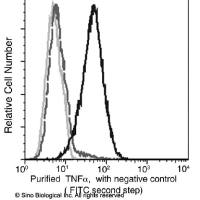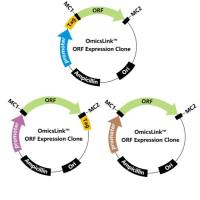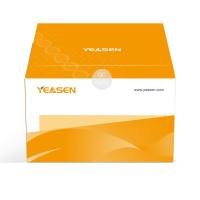Isolation of Primary Fibroblasts from Mouse Embryos
互联网
881
Isolation of Primary Fibroblasts from Mouse Embryos
1. Treat 10 cm tissue culture plates with 0.1% gelatin
for at least two hours before use.
2. Sacrifice the pregnant female mouse (day 13 or 14 p.c.)
by cervical dislocation. Dissect out the uterine horns and place into
a petri dish containing PBS.
3. Separate each embryo from its placenta and surrounding
membranes. If desired, keep the yolk sac for genotyping.
4. Wash each embryo by transferring it to a petri dish containing
clean PBS.
5. Using a Pipetman with the end of the tip snipped off,
transfer the embryo into the barrel of a 1cc syringe fitted with an
18G 11/2" needle and, using the syringe's plunger, force the embryo
through the needle into a sterile 15 ml tube containing 1 ml of medium
(DMEM, 1X GPS, and 15% FCS).
6. Working in the laminar flow hood, aseptically transfer the
1 ml of embryo cells to a sterile 15 ml tube containing 10 ml of medium
(DMEM, 1X GPS, and 15% FCS).
7. Aspirate the gelatin from the 10 cm plates and plate out the
suspension of embryonic cells.
8. Incubate the plates @ 37o C until the cells have reached
confluence (approx. 5 days). (The primary fibroblasts will be the only
cells that attach and proliferate.)
9. At confluence, split the plate 1:3 by doing the following:
a. Wash the plate twice with PBS.
b. Add 2 ml of trypsin per 10 cm dish and incubate @ 37o C
for 7 minutes.
c. Add 5 ml of medium (DMEM, 1X GPS, and 10% FCS) to the
plate to neutralize the trypsin. Resuspend the cells by
pipetting up-and-down several times.
d. Uniformly divide the cells among three 10 cm gelled plates,
each containing 8 ml of medium (DMEM, 1X GPS, and 10% FCS).
These plates are designated as Passage No. 1.
10. Upon confluence, harvest and freeze the primary fibroblasts
@ a freezing density of 3.0 x 107 cells/ml. Reserve a fraction of the
cells to seed a 6 cm gelled dish from which DNA will be prepared for
genotyping (unless the yolk sac was used for genotypic analyis).
The frozen cells are designated as Passage No. 2.
From the Laboratory of Dr. Allan Bradley
Baylor College of Medicine, Houston, Texas









